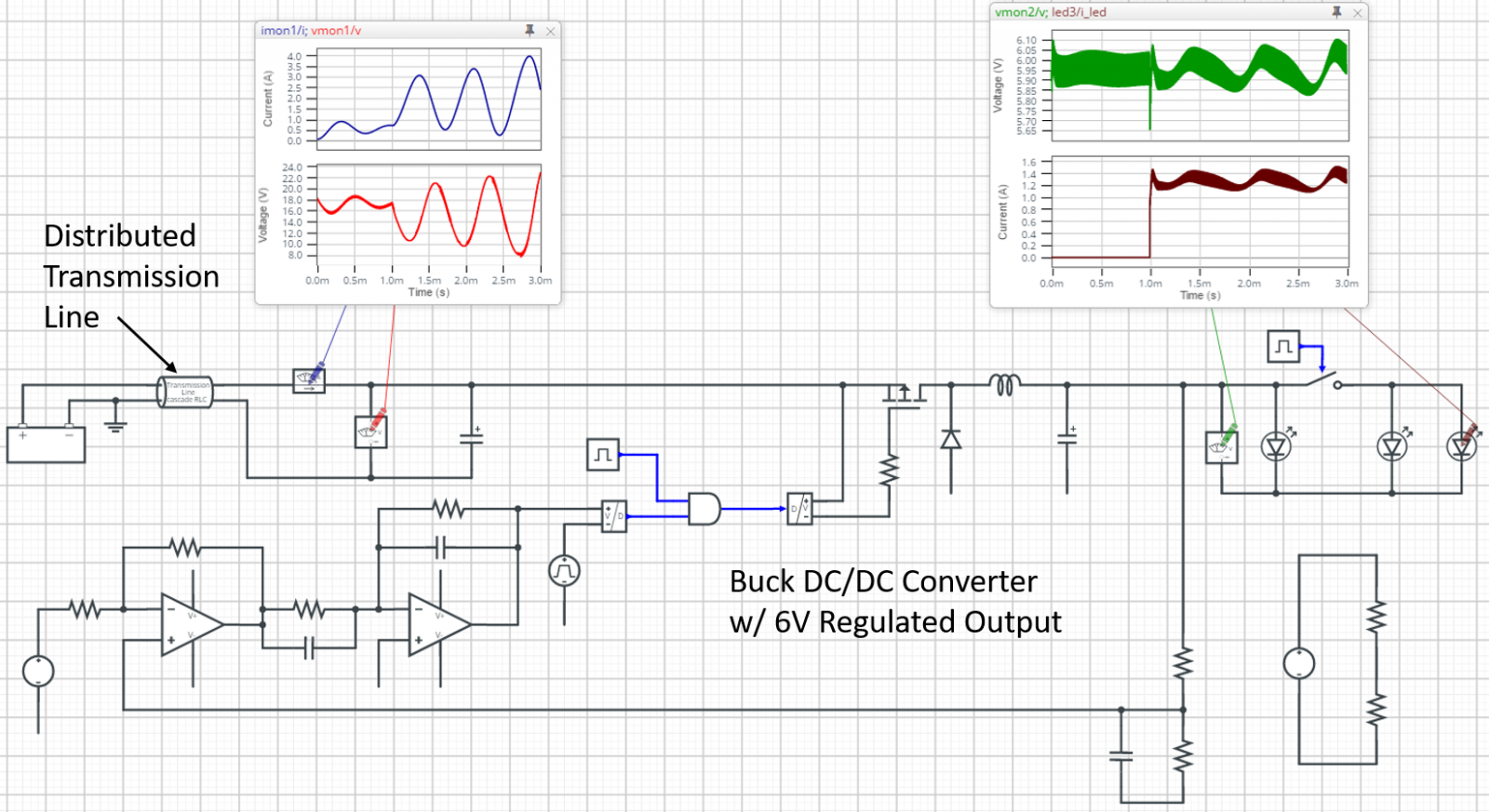Question: When is a wire or cable a transmission line?
Answer: When it is long enough that the propagation delay gives a significant phase shift at frequencies within the bandwidth of the distributed system. In other words, if the delay impacts the dynamics of interaction between the source and load circuits.
Transmission line effects are a key design factor in many electrical engineering applications, including:
• High-speed digital I/O over PCB traces
• Signal integrity of CAN and other local data networks
• Power distribution networks that span continents
But challenging problems can sometimes arise in relatively low-frequency/medium-distance systems. For example, operating a DC/DC converter at the end of a long cable at an airfield, or down-hole at a well-site.
We’ve recently added a multi-element lumped RLC Transmission Line model that represents some key characteristics of transmission lines. The model uses a “cascade” of lumped elements (coupled-RLC). The user can specify the actual line length and the number of lumped segments, and therefore control the resolution of the wave propagation effects. The model will show reflections, standing waves, internal line over-voltage events, etc.
The image above shows the voltage level vs. time, at evenly spaced points, along the distributed line in the following design example. The system is 6V buck DC/DC converter that drives a set of three LEDs (25W total). They are located at the end of an 800 meter cable, with an 18V battery providing power from the opposite end. The transmission line model is specified to use 16 segments, each representing 50 meters of cable length. The conductor DC resistance is set to 1 mOhm/meter, corresponding to 5 AWG wire, giving a relatively small DC voltage drop at the nominal 1.5A load current. But the effect of the transmission line is more than its DC resistance. The line impedance and propagation delay, combined with the effective negative impedance of the power converter (i.e. a constant power load), results in an unstable power system interaction!
In Part 3 of the TDFS Blog series, I’ll discuss the concept of Impedance Stability Ratio, which is very relevant to this problem. And I’ll demonstrate measuring it, using the unique Time Domain Frequency Sweep method available in PartQuest Explore. Stay tuned!
Transient Stability Testing of Transmission Line Fed LED Driver
- 991 views

